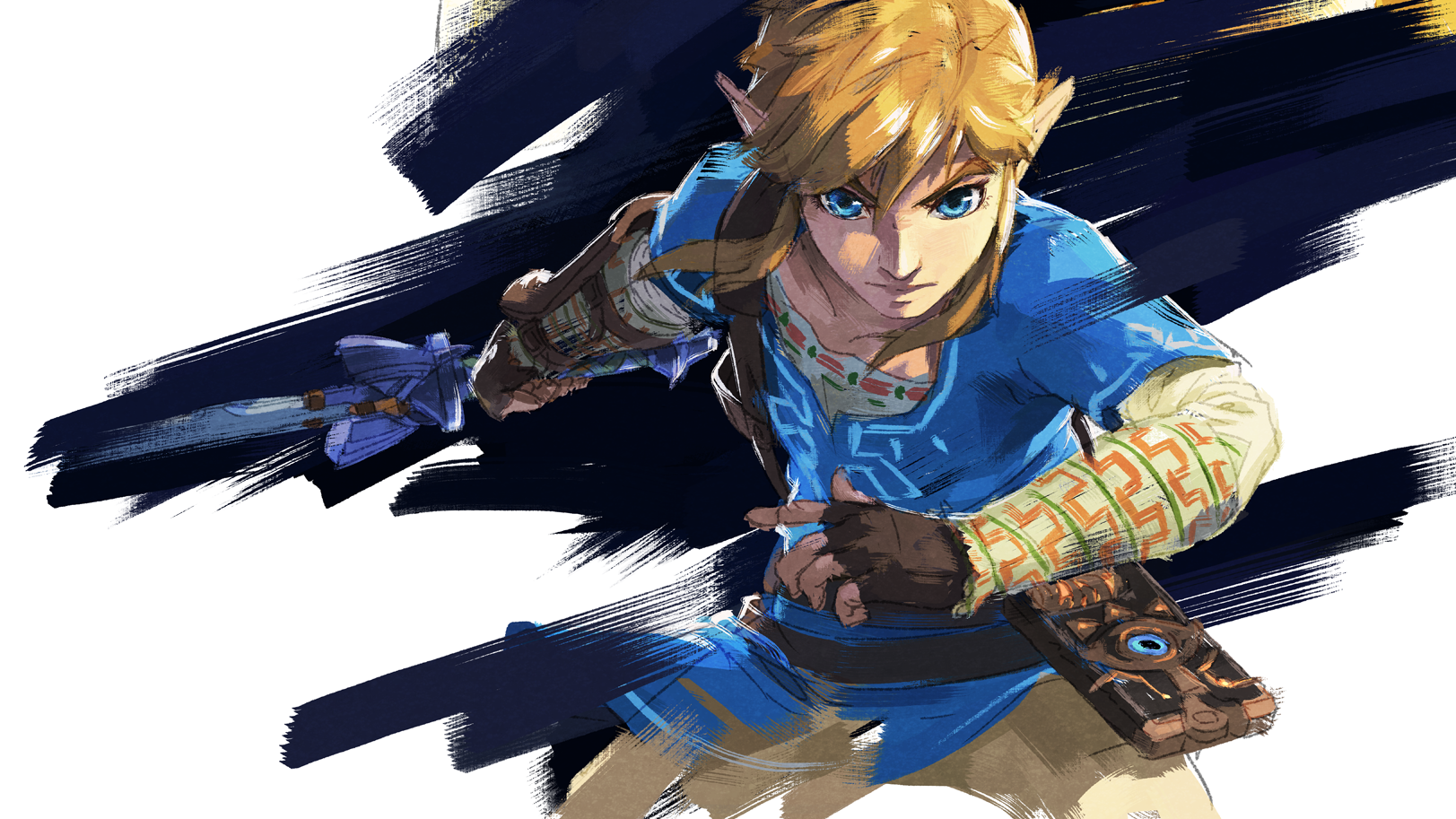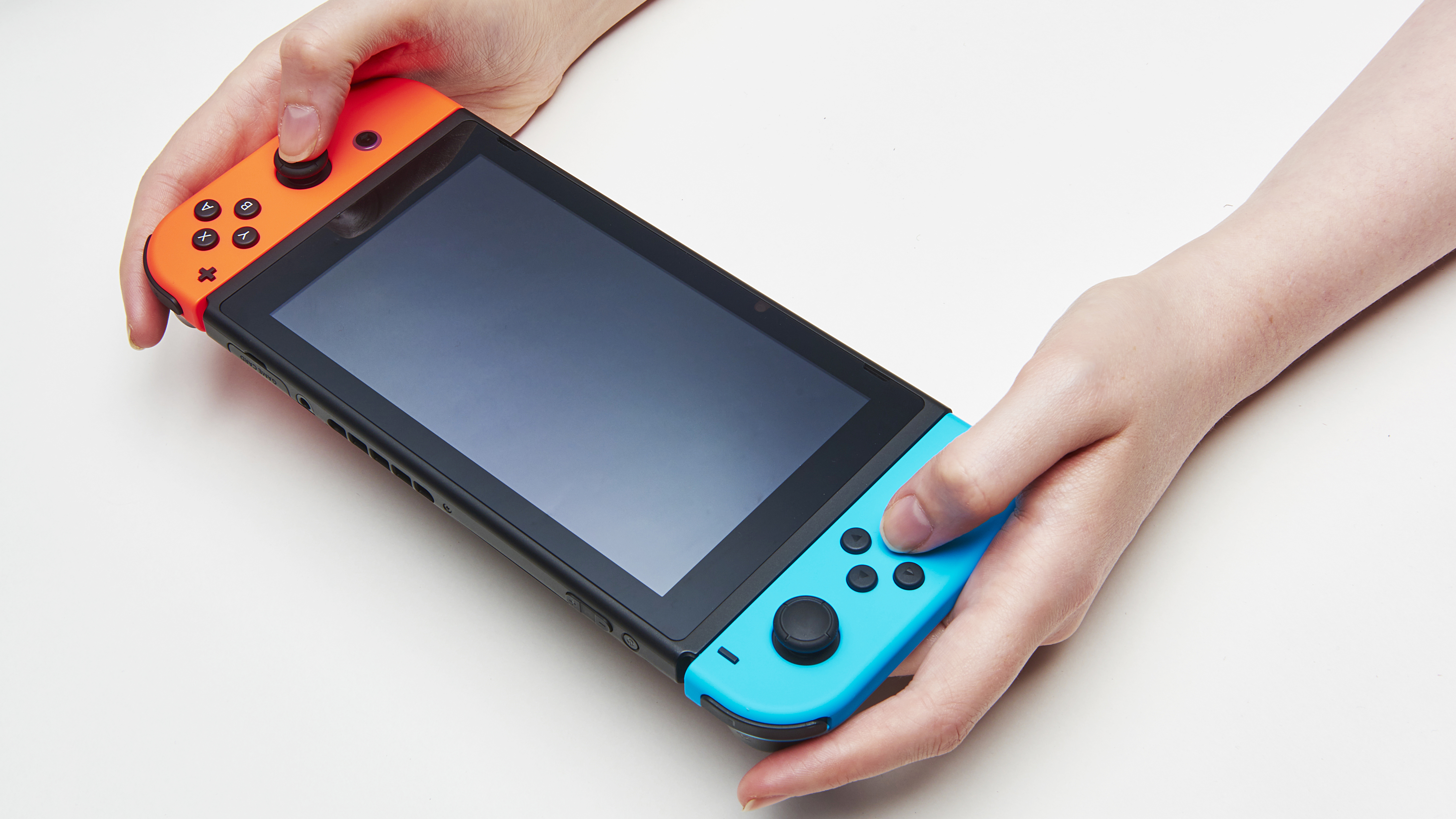GamesRadar+ Verdict
The most freeform Zelda yet, without sacrificing the charm, fun or quality you expect from the series. Nintendo’s finest work since Super Mario Galaxy.
Pros
- +
A vast world you’ll want to explore
- +
Climbing and gliding makes navigation a treat
- +
Physics reinvigorate combat and puzzles
- +
Refreshingly jank-free for a game this size
Cons
- -
Frame rate stumbles during intensive moments
- -
Main dungeons aren’t Nintendo’s best ever
- -
Seeing your favourite weapon shatter into a billion tiny pieces
Why you can trust GamesRadar+
Few gaming moments were as transformative as standing in Hyrule Field in Ocarina of Time, looking up at Death Mountain and realising that, yes, you could get from here to there. In hindsight it wasn’t entirely true - transition screens partitioned the mountain into chunks that wouldn’t choke the N64 - but at the time: whoa. It was a moment so genre-defining that I’m not sure Nintendo ever stepped out of that mountain’s shadow. That’s the curse of rewriting the rulebook - once the ecstasy of innovation has died down, it’s just another template you’re beholden to. Well, Breath of the Wild doesn’t want to play by the rules.
The rulebook isn’t just torn up. It’s crushed beneath boulders, burned in a forest inferno and struck by lightning. Science has arrived in Hyrule, a rush of freeform simulation that brings with it a spark of life that could never quite ignite in the hand-crafted worlds of old. This is a Hyrule where a sudden thunderstorm sees you desperately shed conductive metals before lightning turns you into a baked potato. A Hyrule where trees can be chopped and ridden down rapids as you snipe at unsuspecting goons on the riverbank. A Hyrule where volcanic air ignites the wooden blade in your grip and rain makes your hands slide like warm butter off cliff walls.
But as Hyrule misbehaves, so Link can misbehave in it. Today’s obsession is attaching inflatable octorok guts (think Metal Gear’s Fulton balloons, but way, way grosser) to logs and clinging to the bark as I serenely float over the fields like the old guy in Up. Yesterday was all about trying to bring down helicopter sentries by starting grass fires and heaving bombs skywards by lobbing them into the resulting updraft. Every day I find time to use Link’s metal-lifting magnesis power to pick up metal crates and thwack them into moblins. If luck is on my side there’ll be storm too, turning my giant metal fist into a lightning rod. This is how you get kids into science.
So much to do, so much to explore
So much can happen in ten minutes of BOTW that it’s tempting to slip into list mode. The way dropping meat by a dog earns you a loyal pal. Or that stealing a resting bokoblin’s club leaves him empty-handed in a fight. I particularly love fighting in long grass and then retracing the path of the battle by where the greenery is trimmed. Nintendo always gives you great toys in Zelda games, but it’s never let them collide and blend so freely. That it quickly hands over an infinite supply of bombs, your magnetic power and another ability to charge objects with kinetic energy (firing even the heaviest boulder like a golf ball) is a clear invitation to go wild.
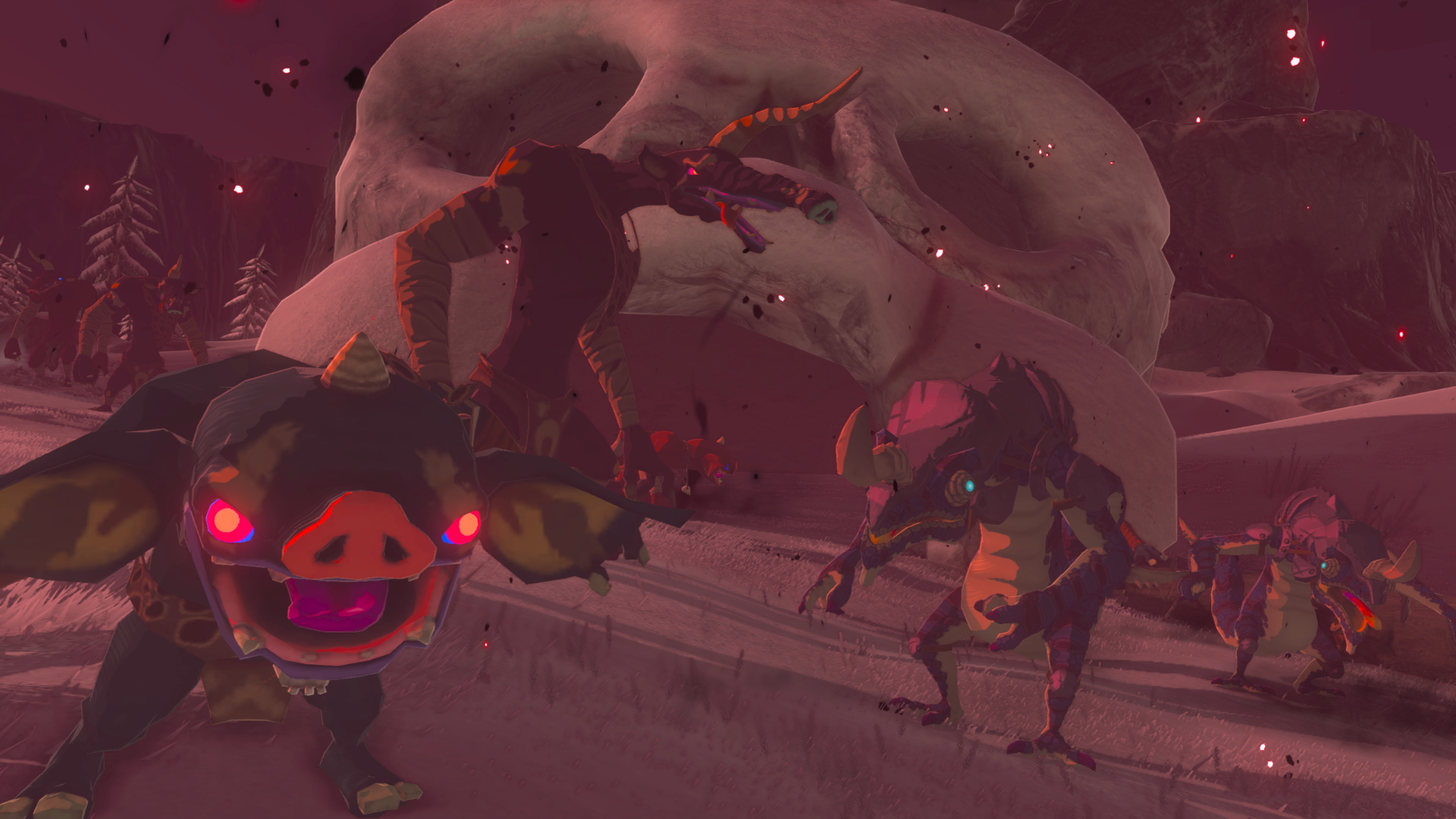
Improvisation runs deep in Breath of the Wild. Not just in moment-to-moment goofing, but in a central quest that - after introducing some basics across a hemmed-in starting ground - pretty much leaves the rest to you. Calamity Ganon festers away in the centre of the map, and you’re free to take a pop at him when you want. His army of superpowered mech bodyguards means you won’t get far - I struggle with them after 40 hours - but that you’re able to try shows a huge shift away from the maligned hand-holding of Skyward Sword. If anything, it exposes the older Hyrules a little (bar Wind Waker’s glorious ocean) for the not-so-open worlds they are.
"For the Zelda team’s first ‘true’ open world this is a staggering achievement"
The thrust of the game, then, is evening the odds - using all these wonderful new tools in creative ways, while kitting-out Link to a point where he won’t get smushed to a paste. For many this will mean following the central quest line. You know the deal: find the dungeon, do the dungeon, earn a power to assist in the final assault. These segments are more traditional than the game around them, but are storming mini-adventures in themselves. One of the things Skyward Sword really got right was dragging larger action beats and puzzles out into the overworld - with its vast open canvas, Breath of the Wild supercharges this idea. It’s hard to name another open world game that so seamlessly slips between set-piece and sandbox.
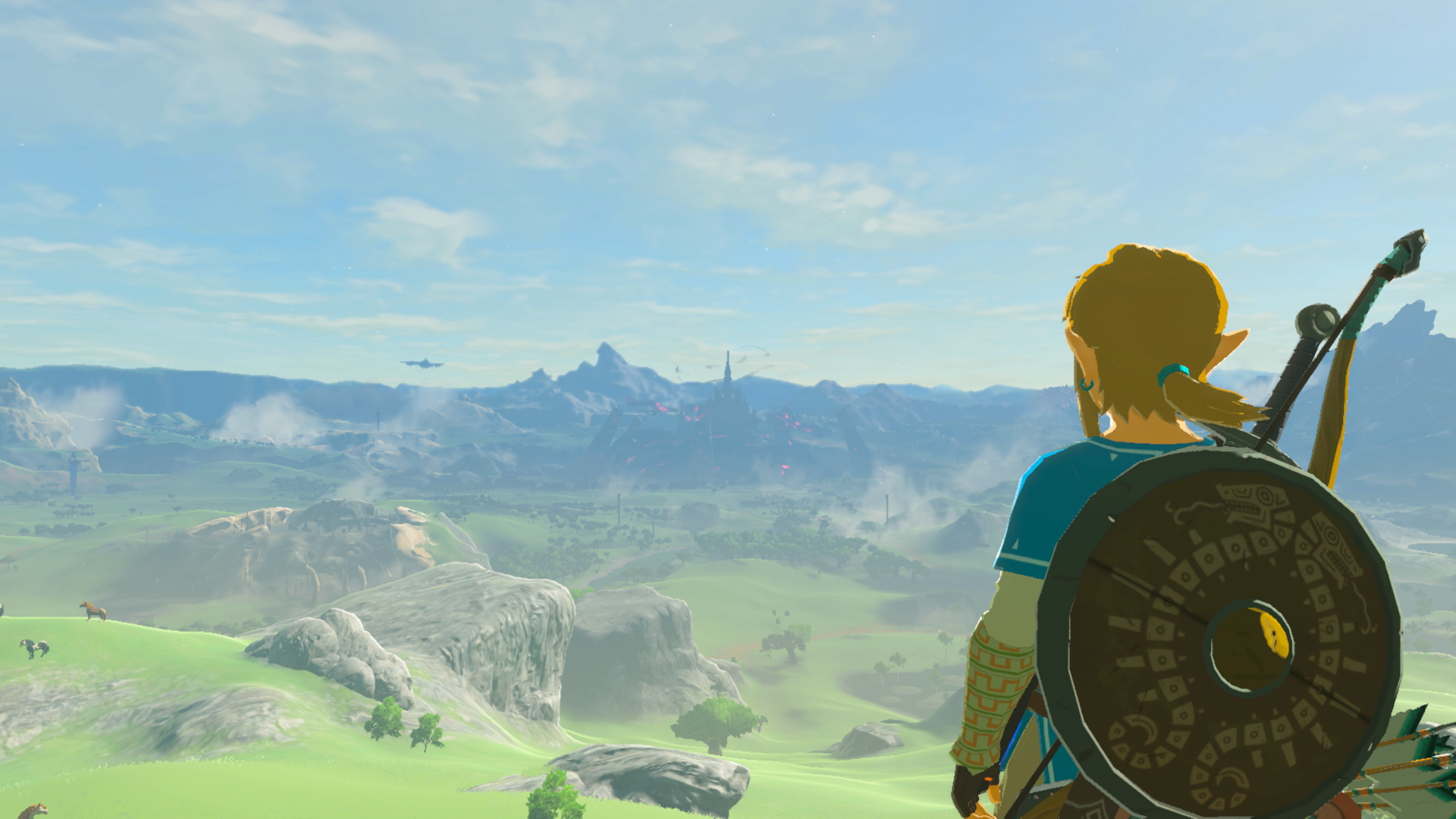
Even these linear scenes are open to interpretation, with key destinations you can tackle in any order. If you were to stick to the story you’d only visit half the regions available on the map, and see only a sliver of those to boot. It’s in pushing into untouched territories, solving their mysteries to unlock their artefacts, that you can carve your own route to the final boss. If this involves tanking your way to Ganon with 100 bomb arrows and a knapsack packed with health-restoring steaks, then so be it. That this is the first Zelda you can win by exploiting barbecued meats is a glorious thing. Here’s hoping I eventually find a chest containing some Rennie.
Weekly digests, tales from the communities you love, and more
The open world delivers scale and detail
For the Zelda team’s first ‘true’ open world this is a staggering achievement. It collaborated with Monolith Soft, makers of Xenoblade Chronicles, and the resulting world comes as no surprise. Bionis’ towering architecture is a clear touchstone for Hyrule, from the vast stone mushrooms of the Thundra Plateau to the surprise arrival of a tropical paradise nesting behind seemingly barren cliffs. It manages the difficult trick of giving you the broad strokes of the epic - the mountainous skyline, 300 foot waterfalls, the odd ribcage of some continent-sized beast - but, unlike Xenoblade, delivers nuance up close.
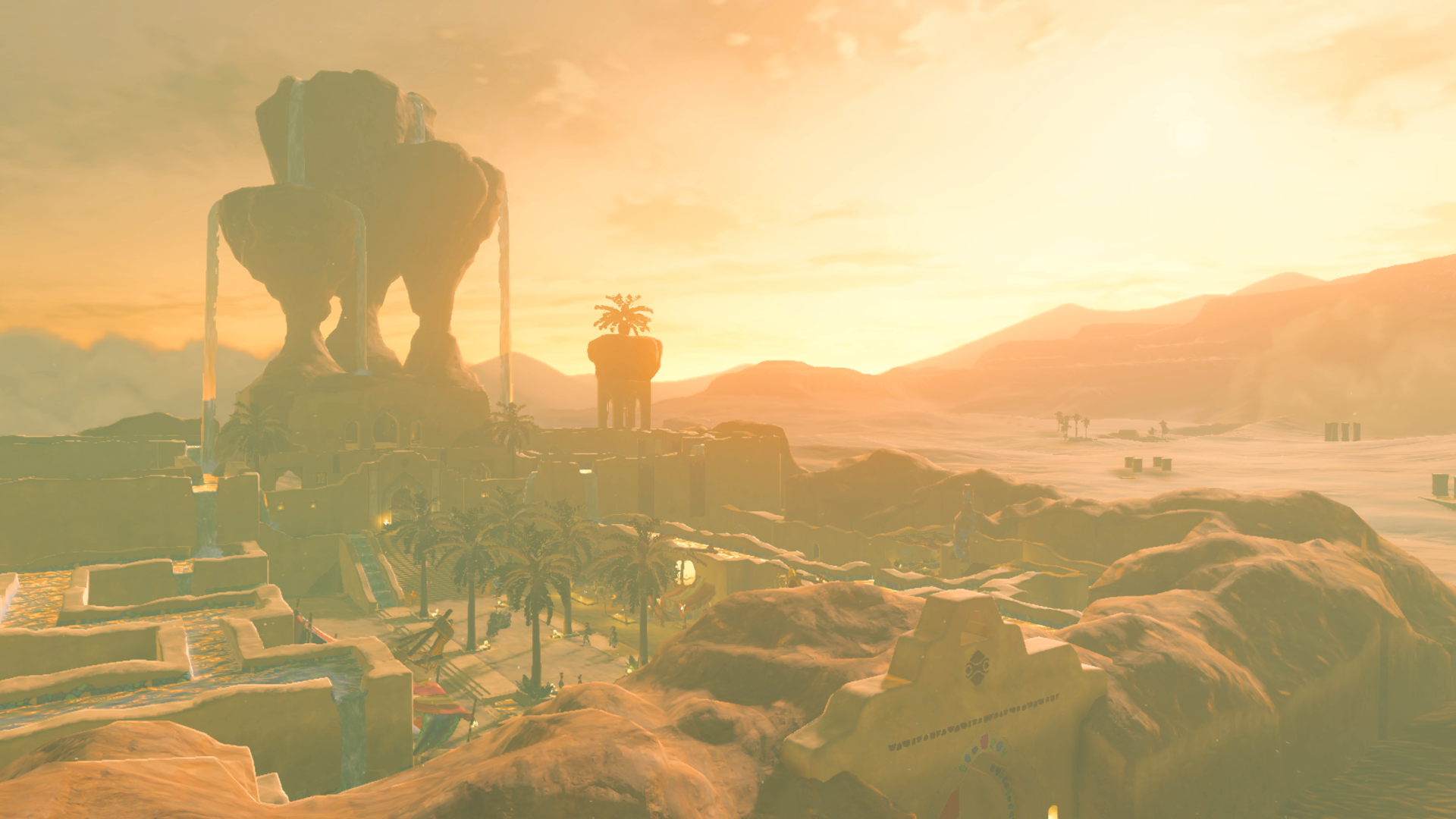
This might mean rare horses to creep up on and grab - getting a hoof in the gob for a clumsy approach - or a vast array of foxes, storks and goats to turn into tomorrow’s lunchbox. Just the sensation of standing in wafting grass is pleasant enough to wile away a few minutes. Then it’s time to whistle for your steed and gallop towards the next treehouse or skull-shaped caved poking out from the ocean of green. In these moments, Breath of the Wild feels like Wind Waker on a horse. Diligent exploration uncovers Shrines, containing a room or two of dungeon puzzling that didn’t find a home elsewhere. On that note, while some may feel the ‘proper’ dungeon count a little low, and their size a little small, the many dozens (possibly hundreds) of Shrines make this the most puzzle-stuffed Zelda yet. Your brain certainly doesn’t come out the other side feeling undernourished.
More than this, Hyrule never slips into tick ’em off chores popularised by Far Cry or Assassin’s Creed. Where you find people, you find side quests with meaningful rewards. Where you spot intriguing landmarks, you find ancient riddles to untangle. Everything that falls in between is exploring for exploration's sake; the thrill of cresting a mountaintop, or gliding into the dark crevice below. In a delightful touch there are hundreds of Koroks - Wind Waker’s forest people - hiding across the world, many on lonely peaks who exist just to let you know that yes, Nintendo knew you wouldn’t be able to resist climbing up. Here’s a reward. Nice view, isn’t it?
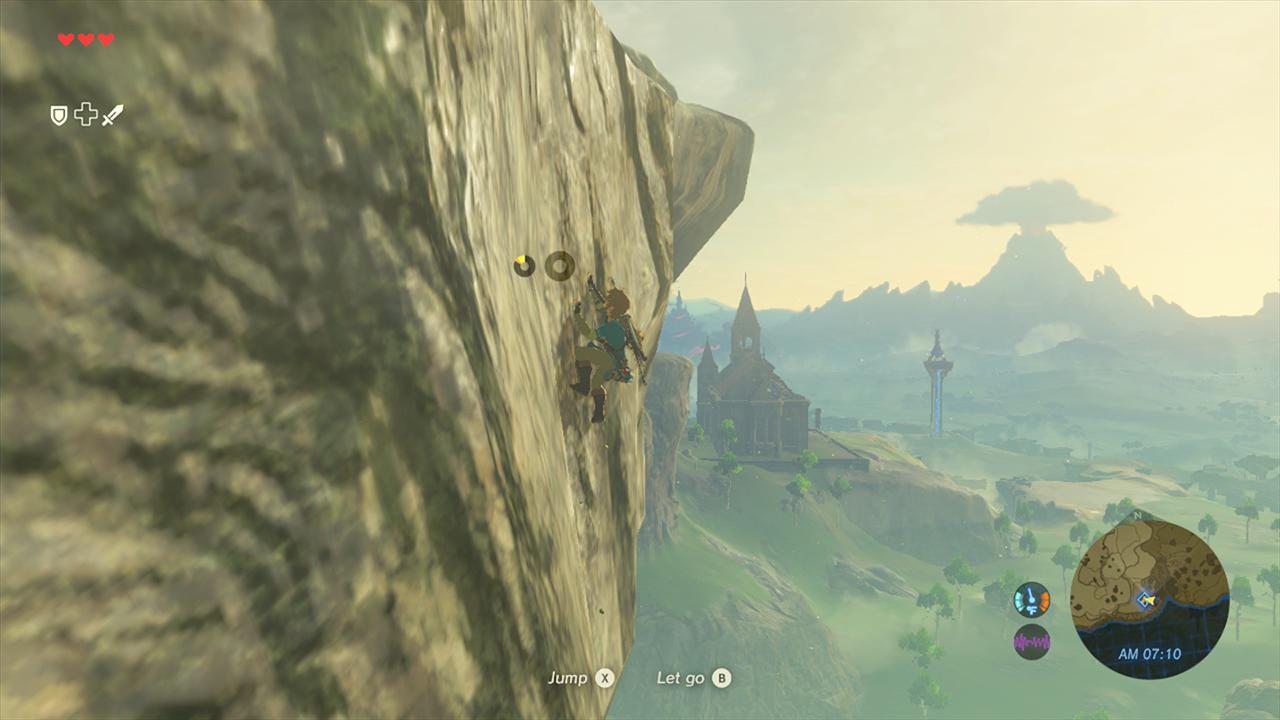
Climbing is Breath of the Wild’s secret weapon. Scrambling up surfaces makes you intensely aware of the world above you and invites designers to hide secrets in the weirdest places. More than this, the use of a quickly draining stamina meter transforms every surface into a puzzle. As you plot snaking routes up daunting cliffs you wonder if you’ve got the grip to make it between footholds. Could the paraglider bridge that peak and that plateau? Will it rain halfway up and doom the expedition? After years of glitching Geralt and Dovahkiin up mountains they were never meant to climb, Link’s flexibility is a revelation.
A reinvention of action RPG levelling up
In fact, throughout Breath of the Wild you sense Nintendo gleefully taking apart action-RPG conventions. Defining Link’s stats by equipment rather than levelling is smart, as you’re only as strong as the goods you carry. One lucky find - a rare halberd with 20 points more damage and added durability, say - can give you the foothold you’ve been looking for in an area with harder enemies. Then you have to contend with weapon degradation, asking you to really cherish what you have and master whatever ends up in your hands. That could be a bladed boomerang (in a great touch you have to catch them with a timed button prod); it could be, and for me often was, a broom or soup ladle.
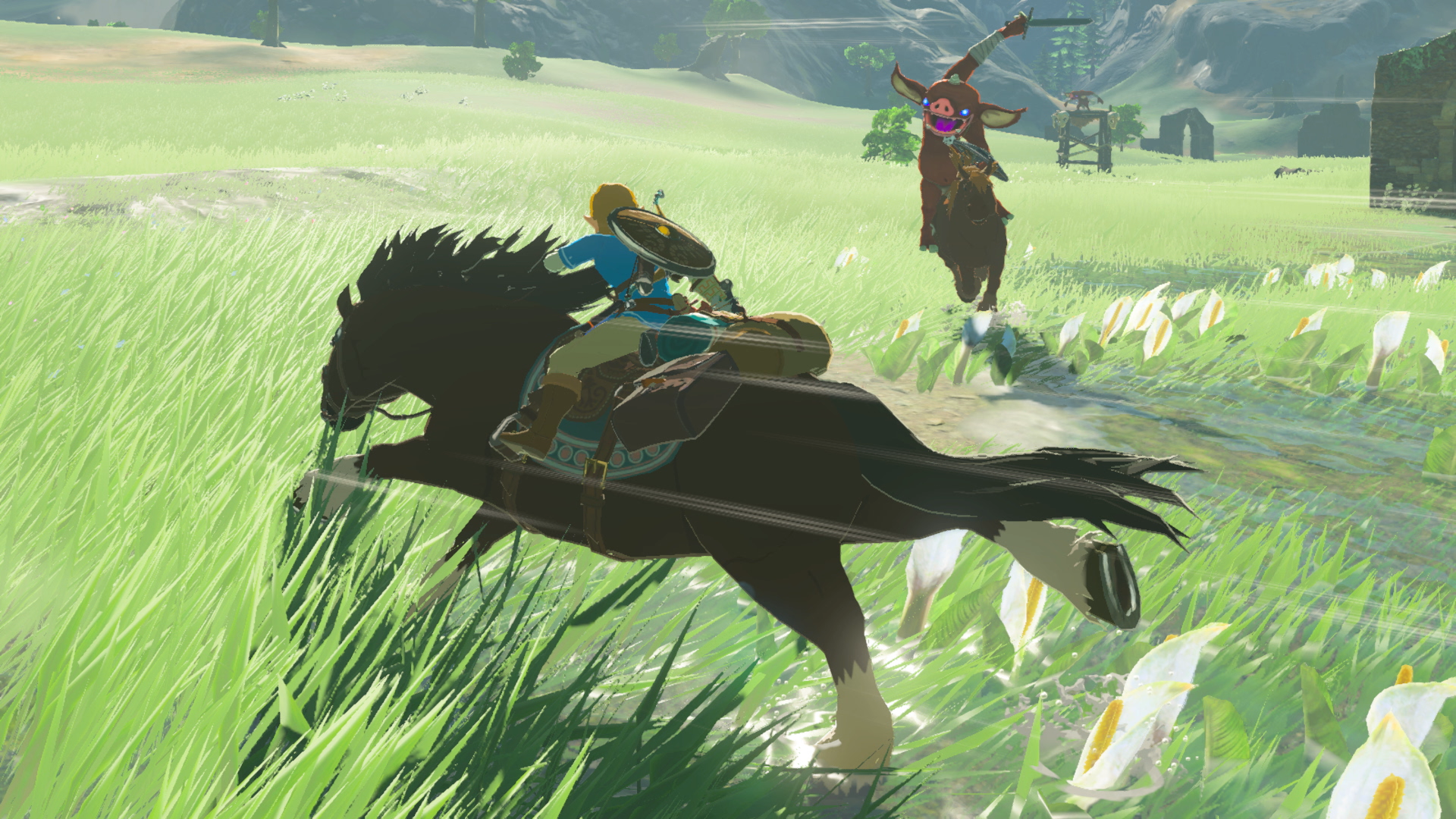
If a soup ladle won’t give the Master Sword any restless nights, it does at least reflect Link’s new culinary bent. With health-replenishing hearts removed from the world you depend on cooking to whip up healing meals and buffs. It adds a hint of the survival sandbox, but is never so intrusive that it brings that genre’s misery. Take the heat gauge, for example. Link chugs elixirs to endure extreme hot or cold, but once in those regions you will soon find clothing that negates those concerns. It asks you to do just enough to prove you have the survival chops, but refuses to let stress get in the way of the fun. It’s a beautiful Nintendo take on a mechanic that so easily becomes a chore elsewhere.
As a long-term fan, it’s a treat to see Nintendo take its gift for problem solving outside of the Zelda comfort zone - a place the series has arguably inhabited since Ocarina of Time. Not since that game’s leap to 3D and introduction of lock-on targeting has a Zelda game made this many breakthroughs. More than that, by going open-world, Nintendo is working in a genre that’s so often flawed; the sheer ambition of creating an entire continent helps you overlook any filler within it. Breath of the Wild isn’t perfect - the right combo of visual effects can hurt the frame rate in a way that is rare in Nintendo’s first party efforts - but it asks you to forgive far fewer rough edges compared to its peers.
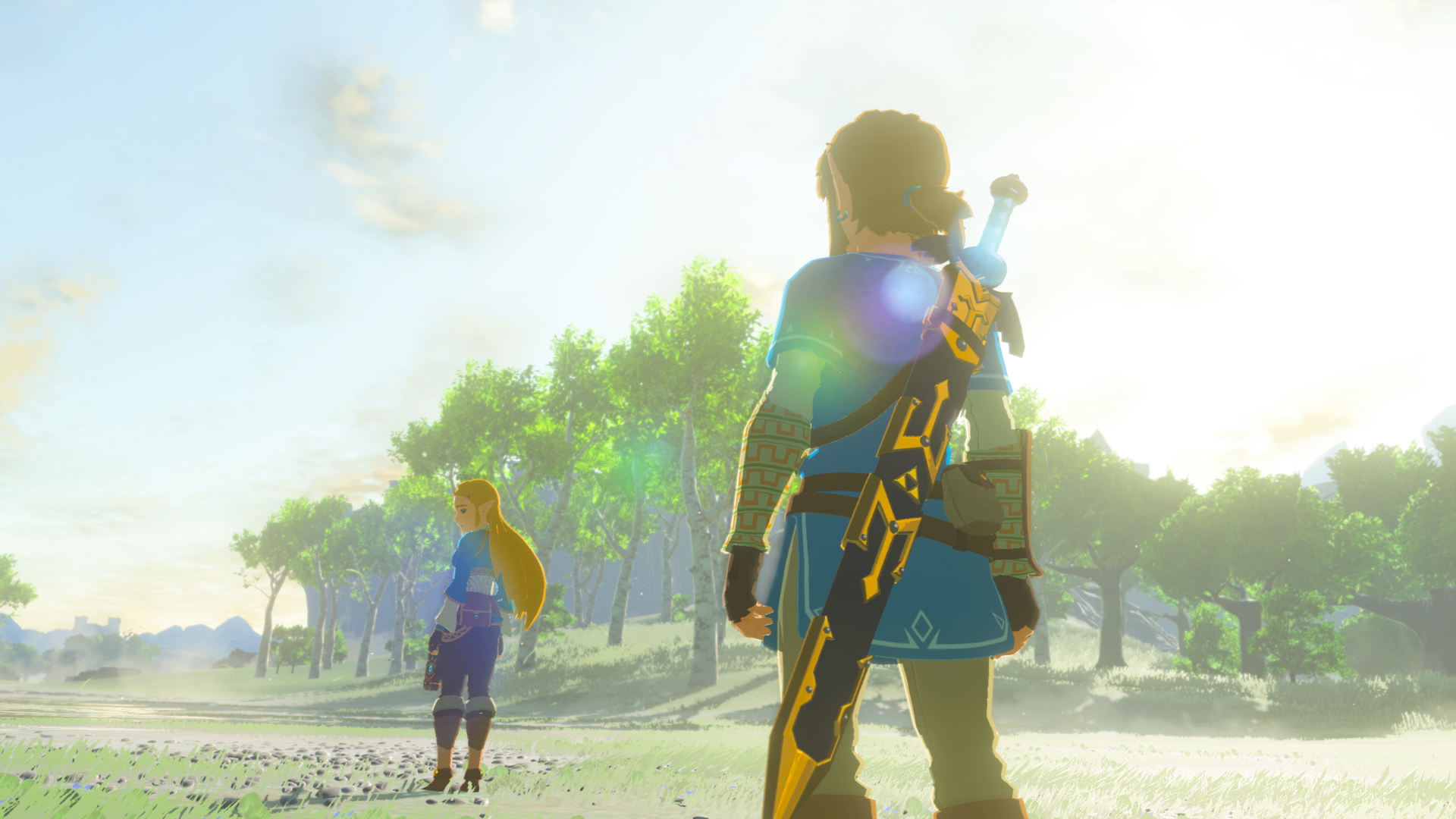
The best surprise? For all it challenges Zelda’s rules, there is never any doubt which gaming universe you are in. A stoic, silent hero. Musical themes that whisk you back to where you first heard them. Giving your horse an inappropriate name. Bizarro NPCs who lodge in memory with just a couple of static text boxes. Gorons in the hot bit, Zoras in the wet bit. A moon that almost out-creeps Majora’s Mask’s. The terrible fate that awaits chicken abusers.
The series has always had something of a fairytale quality to it - its grand landscapes and worlds suggestive of so much more. The sight of dawn over a shimmering lake. The rolling plains of Hyrule Field stretched out beneath you. It speaks to our imaginations, calling us on to adventure. What a familiar feeling to look across Hyrule Field at Death Mountain, wondering what it would be like to climb it. What a profound thrill to make that journey in its entirety. It has taken 18 years, but Nintendo has done it again: this is the adventure game to beat.
This game was reviewed on Nintendo Switch.
P.S. Don't miss our 13 tips we wish we knew before we started!
More info
| Genre | Action RPG |

Matthew Castle is the former editor of Official Nintendo Magazine and Official Xbox Magazine. He was also part of the team on the Nintendo Gamer magazine back in the day. Since then, he's worked at Rock, Paper, Shotgun as part of their video team, as well as for the official Xbox On YouTube channel. Nowadays, he's a freelance games critic and consultant, and one half of the Back Page podcast.
